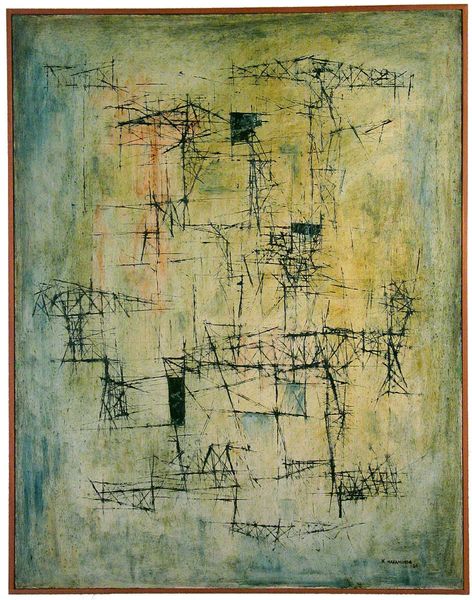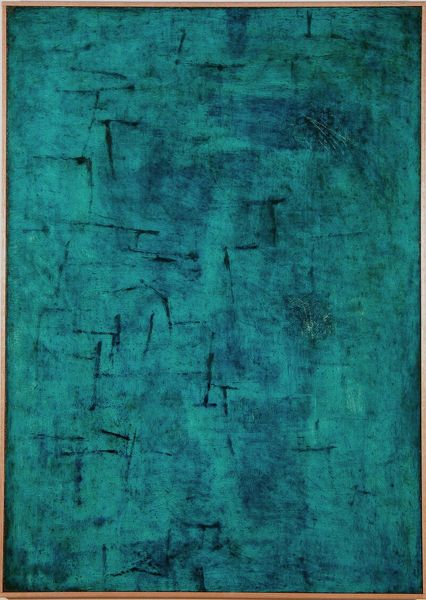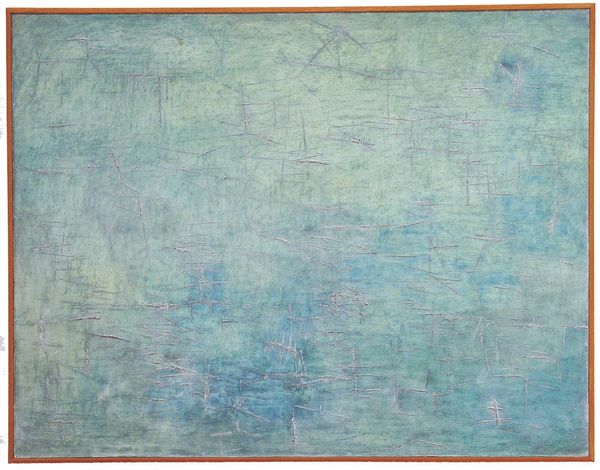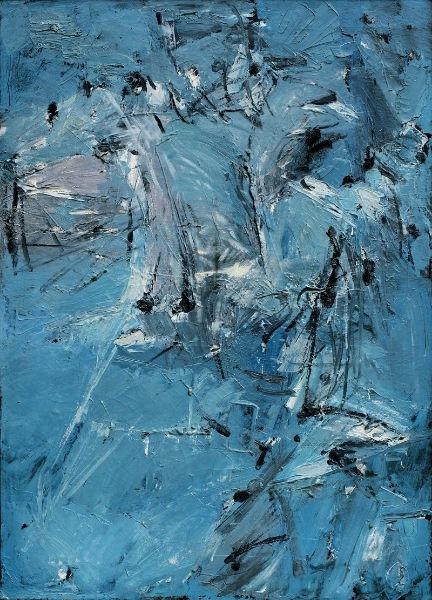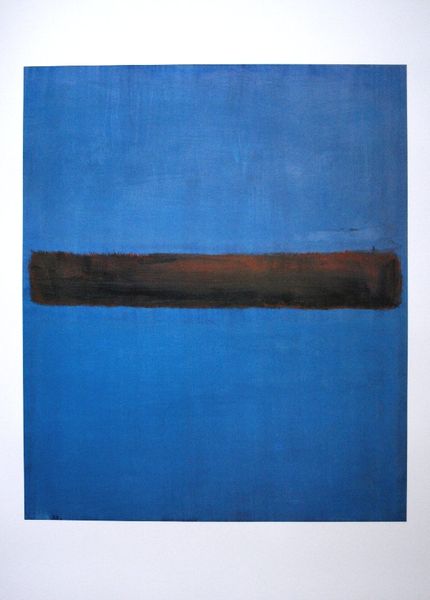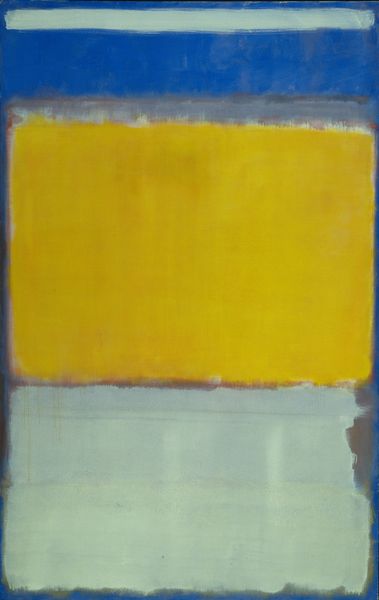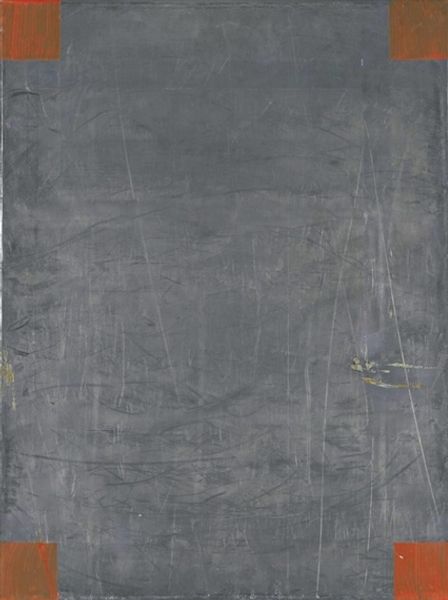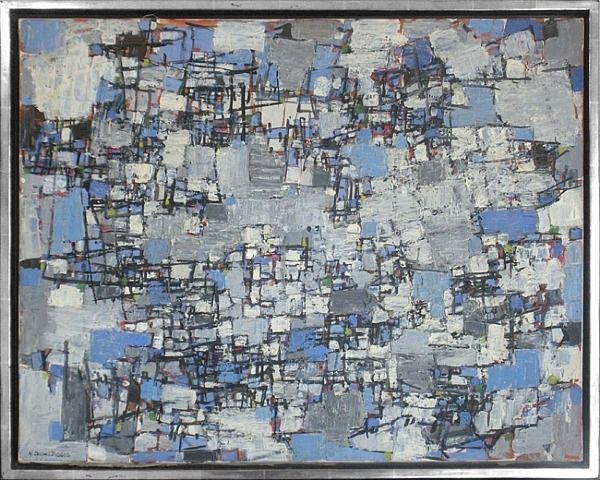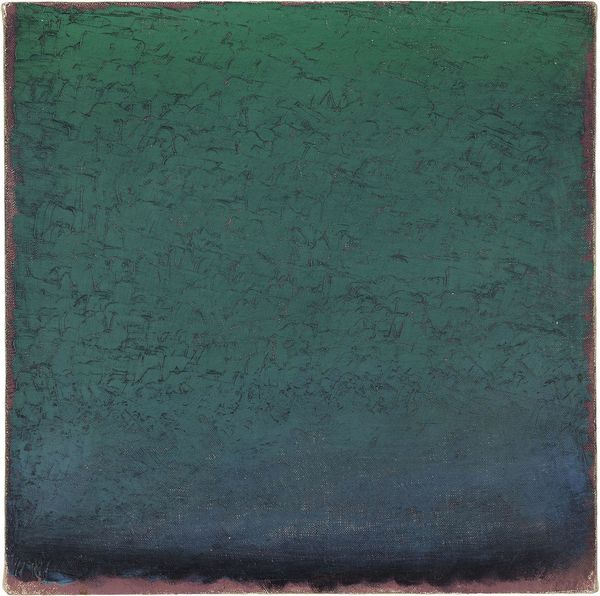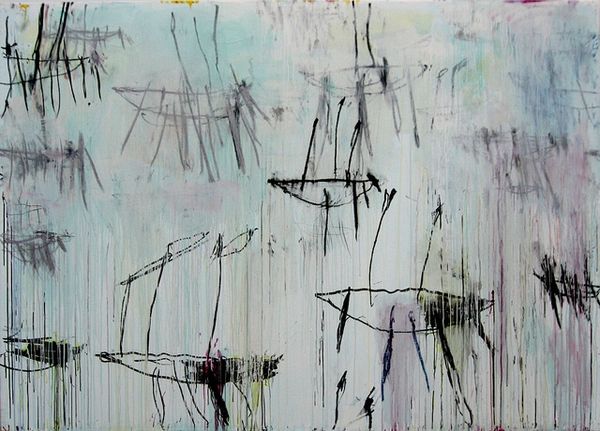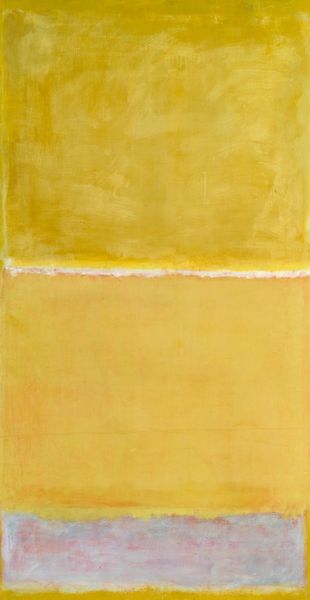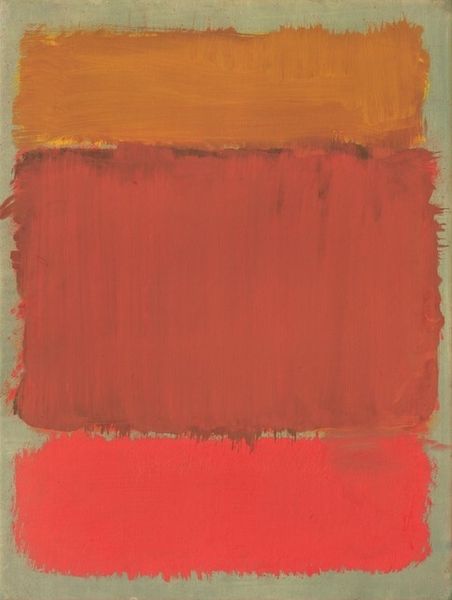
painting, watercolor, impasto
#
abstract-expressionism
#
abstract expressionism
#
water colours
#
painting
#
watercolor
#
impasto
#
geometric
#
line
#
watercolor
Copyright: Kazuo Nakamura,Fair Use
Curator: Here we have Kazuo Nakamura’s "Morning Mist," created in 1951. It’s a stunning example of abstract expressionism rendered in watercolor. Editor: My initial reaction is the tranquility of it; a very calming blue that dominates, but the geometric lines layered throughout bring forward a sense of barely contained tension. I want to touch the surface. Curator: Considering the post-war era in which it was produced, that tension could be read as reflective of the anxieties and uncertainties prevalent at the time. Artists like Nakamura were grappling with a rapidly changing world. Editor: Yes, you can see his methods employed at their fullest extent with watercolor on this canvas! It seems simple on first glance. But his approach suggests deep labor. See how the impasto almost adds dimension to such gentle medium. Curator: Absolutely. Abstract Expressionism, particularly after the Second World War, became a key movement through which artists could explore complex emotions without directly referencing the horrors of conflict. Editor: Right, his engagement here goes against typical conventions of fine art by exploring materials we frequently dismiss or take for granted. The piece allows us space to value process alongside imagery and context. Curator: And it reflects a shift in the art world at the time, increasingly seeing the rise of the artist and challenging traditional academies, as artists took on new levels of celebrity, moving into gallery spaces, such as Peggy Guggenheim’s Art of This Century. Editor: It speaks of consumption too. Watercolour as an inexpensive, utilitarian medium, suddenly the central material. Nakamura makes you think about how we attribute artistic and economic value to mundane, every day tools. Curator: Precisely. It’s about more than just individual expression. The very act of creating this type of abstract art became intertwined with asserting freedom and individualism in a world that was rapidly standardizing. Editor: Ultimately, it invites one to consider the weight inherent to simple art making. Curator: I'd agree. The work provides space to look to materials in new ways and consider the shifting role of art at a pivotal moment in the twentieth century.
Comments
No comments
Be the first to comment and join the conversation on the ultimate creative platform.
